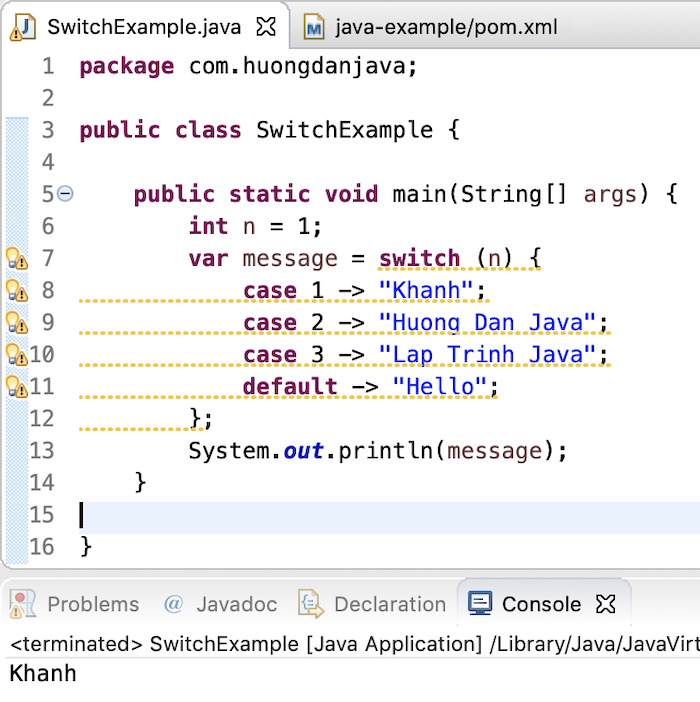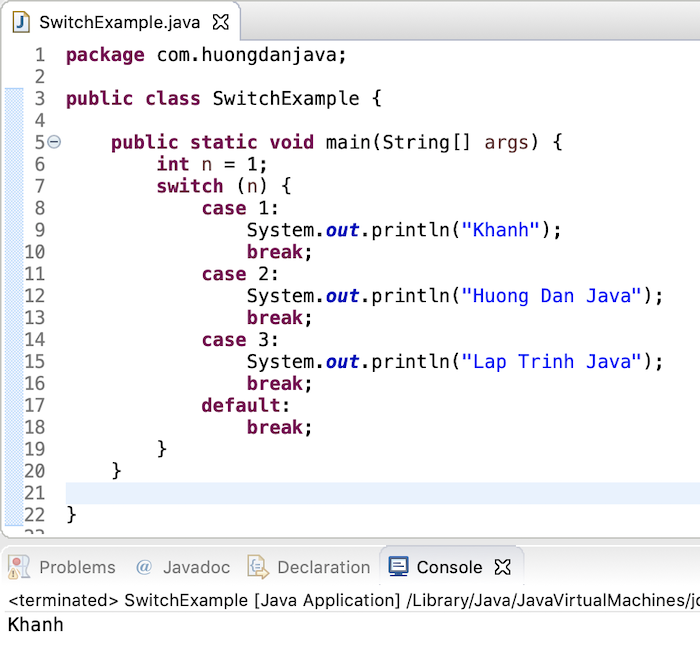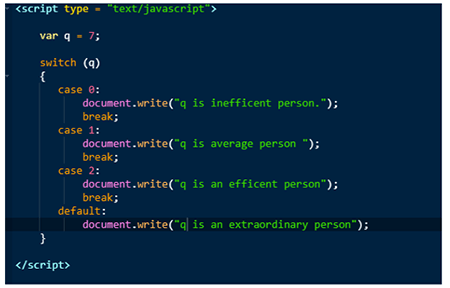

We consider the following switch statement: #include The optional default case runs when no other matches are made.

You need to introduce a break statement in each case to branch at the end of a switch statement. When working with switch case in C, you group multiple cases with unique labels. Printf("Other programming language\n") }} Try changing the value of variable num and notice the change in the output.įor example, we consider the following program which defaults: #include After executing the case, the control will fall out of the switch and program will be terminated with the successful result by printing the value on the output screen. In this program, since the value stored in variable num is eight, a switch will execute the case whose case-label is 8.A switch construct is used to compare the value stored in variable num and execute the block of statements associated with the matched case.In the given program we have explain initialized a variable num with value 8.Once the switch is executed the control will go to the statement-x, and the execution of a program will continue.įollowing diagram illustrates how a case is selected in switch case: How Switch Worksįollowing program illustrates the use of switch: #include.Otherwise, it is not necessary to write default in the switch.

Whenever the value of test-expression is not matched with any of the cases inside the switch, then the default will be executed. Break will terminate the case once it is executed and the control will fall out of the switch. This should not happen hence we always have to put break keyword in each case. If we do not put the break in each case then even though the specific case is executed, the switch in C will continue to execute all the cases until the end is reached. The break keyword in each case indicates the end of a particular case.As soon as a case is found the block of statements associated with that particular case is executed and control goes out of the switch. This value is compared with all the cases until case whose label four is found in the program. Suppose the test expression contains value 4. Whenever the switch is executed, the value of test-expression is compared with all the cases which we have defined inside the switch.A block is nothing but multiple statements which are grouped for a particular case.Each of these cases is associated with a block. Case labels always end with a colon ( : ).

This creates problems in the program and does not provide the desired output. Then while executing the program, the case that appears first will be executed even though you want the program to execute a second case. Suppose we have two cases with the same label as ‘1’. Remember that case labels should not be same as it may create a problem while executing a program. Value-1, 2, n are case labels which are used to identify each case individually.The expression can be integer expression or a character expression.


 0 kommentar(er)
0 kommentar(er)
